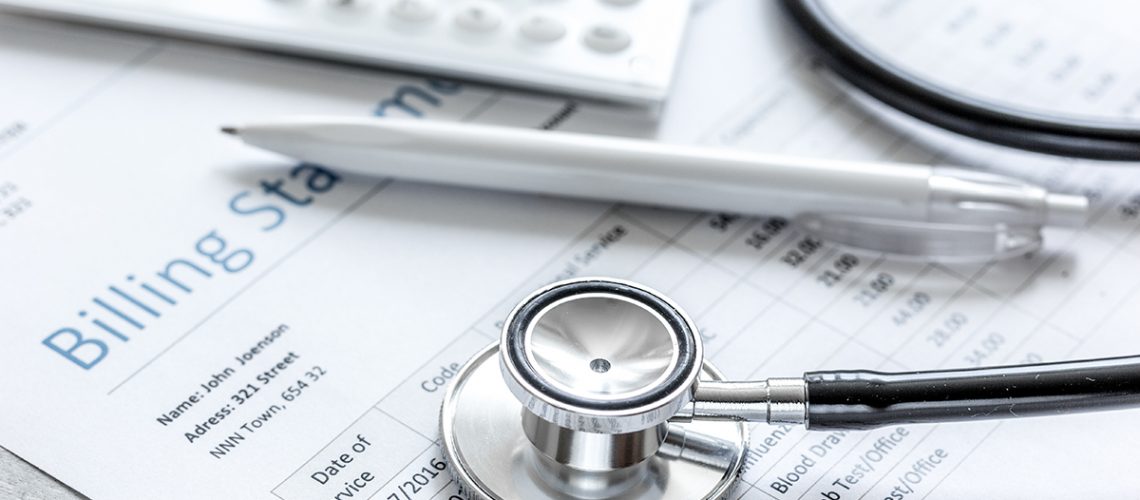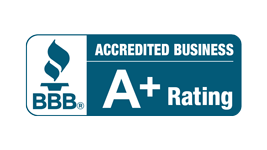Have High Medical Bills Surprised You?
Medical bills can be overwhelming, especially when you’re hit with unexpected charges that seem to come out of nowhere. Whether it’s a surprise bill from an out-of-network provider or an emergency room visit that leaves you financially drained, the stress of these surprise medical costs can add to the already difficult experience of managing your health.
This analysis of government data estimates that people in the United States owe at least $220 billion in medical debt. Approximately 14 million people (6% of adults) in the U.S. owe over $1,000 in medical debt and about 3 million people (1% of adults) owe medical debt of more than $10,000. [1]
That’s where the No Surprises Act comes in. Enacted in 2022, this landmark legislation was designed to protect consumers from unexpected medical bills and ensure that patients are not left with hefty charges for services they didn’t expect.
What is the No Surprises Act?
The No Surprises Act is a federal law that was passed in 2020 and went into effect on January 1, 2022. Its primary goal is to protect consumers from unexpected medical bills, often referred to as “surprise billing.” These types of bills typically occur when patients unknowingly receive care from an out-of-network provider, even when they are receiving treatment at an in-network hospital or facility.
Before the Act, many patients were blindsided by high charges for services from out-of-network doctors, especially in emergencies or when they had no control over who provided their care.
The law also introduces several key provisions aimed at providing consumers with more transparency and fairness when it comes to their medical costs. By requiring that patients be notified about their financial responsibilities up front and providing an easier process for resolving billing disputes, the No Surprises Act seeks to make medical billing more predictable and manageable.

Key Protections for Consumers & What Types of Charges Are Covered?
The No Surprises Act provides crucial protections that reduce the likelihood of surprise medical bills, especially for emergency and certain non-emergency services.
1. Emergency Services
If you require emergency care, you are protected from surprise out-of-network bills. Whether you’re treated by an out-of-network provider in an emergency room or through emergency ambulance services, you’ll only be charged at the in-network rate, even if you didn’t choose the provider.
2. Non-Emergency Services at In-Network Facilities
If you receive non-emergency care at an in-network hospital, but an out-of-network provider (e.g., anesthesiologist or radiologist) treats you, the law prevents you from being charged more than the in-network rate. However, this protection only applies if you were unaware of the out-of-network provider.
3. Cost Estimates Before Non-Emergency Procedures
Providers must give you a good faith estimate for non-emergency services, allowing you to understand potential costs in advance. This ensures greater transparency and helps you avoid surprise out-of-network charges.
4. Air Ambulance Services
The Act also protects you from unexpected charges for air ambulance services, which can be especially costly in emergencies. You won’t be charged more than the in-network rate for these services, even if they are provided by an out-of-network company.

5. Ancillary Services and Rural Areas
The law also covers ancillary services like anesthesia, lab work, and pathology if they’re provided by out-of-network professionals at in-network facilities. For patients in rural areas, additional protections are in place, ensuring fewer surprise bills due to limited in-network provider options.
How The No Surprises Act Benefits You
The No Surprises Act brings tangible benefits for consumers, aiming to make healthcare costs more predictable and manageable. Here’s how the law directly impacts you:
Financial Relief in Emergencies
Before the Act, many patients were blindsided by hefty bills for emergency care, especially when treated by out-of-network providers. With these protections, you won’t face unexpected charges in emergency situations, offering significant financial relief when you need it most.
Improved Transparency in Medical Billing
The law requires providers to give clearer cost estimates before non-emergency procedures, allowing you to make informed decisions. With greater transparency, you can better navigate your healthcare costs and avoid surprise out-of-network charges.
Dispute Resolution Process
If you do receive an unexpected bill, the No Surprises Act provides a dispute resolution process. This process allows you to challenge surprise medical bills and seek fair pricing, offering an additional layer of protection and peace of mind.
Protections for Vulnerable Populations
The law particularly benefits those who may have limited healthcare options, such as those living in rural areas. By ensuring that out-of-network charges are minimized in these regions, it helps ensure that access to affordable care is available, even when in-network providers are scarce.
The Dispute Resolution Process
The Independent Dispute Resolution (IDR) process is a mechanism to resolve disputes between healthcare providers and insurers regarding out-of-network charges under the No Surprises Act. If a patient receives a surprise bill for services provided by an out-of-network provider at an in-network facility, they can appeal the charges through this process. The steps typically include:
- Initiating the IDR: Either the healthcare provider or the insurer can start the dispute resolution process within 30 days of receiving the bill.
- Choosing an IDR entity: Both parties select an independent arbitrator who will review the case and make a binding decision on the payment.
- Arbitration and Outcome: The arbitrator considers factors like the median in-network rate for the services provided, among others. The decision is generally rendered within 30 days of the start of the dispute.
During this process, patients are shielded from escalating bills while the insurer and provider settle the matter. However, the outcome may result in a higher or lower charge for the patient, depending on the resolution.
How The No Surprises Act Affects Health Insurance Plans
The No Surprises Act significantly alters how insurers and healthcare providers handle out-of-network bills:
- Negotiating Out-of-Network Charges: The law requires insurers and providers to negotiate payments for out-of-network services. Insurers must cover these charges as in-network, significantly reducing the patient’s out-of-pocket expenses.
- Reduced Out-of-Pocket Costs: With insurers paying a higher share for out-of-network services, patients' financial responsibility for these bills is significantly reduced.

What Patients Need to Do
Patients should take proactive steps to minimize the risk of unexpected bills:
- Verify Costs: Before receiving any non-emergency services, always verify with your insurer whether the provider is in-network and ask for a written cost estimate.
- Understand Coverage: Familiarize yourself with your insurance policy to understand how out-of-network charges are handled under the No Surprises Act.
- Handling Unexpected Bills: If you receive an unexpected bill for out-of-network services, immediately contact your insurer. They should help guide you through the dispute process.
- Using the Dispute Process: If the dispute cannot be resolved through regular channels, the IDR process is available to settle the issue between providers and insurers.
While the law’s positive impact is clear, there are still challenges. Enforcement gaps and complexities in the dispute process could confuse patients, especially when navigating exceptions or dealing with non-emergency situations.
If you’re facing financial challenges due to unexpected medical bills or other debt, contact Richard West today to explore your options and take control of your financial future.
Source:
[1] Rakshit, S., Rae, M., Claxton, G., Amin, K., & Cox, C. (2024, February 12). The burden of medical debt in the United States | KFF. KFF. https://www.kff.org/health-costs/issue-brief/the-burden-of-medical-debt-in-the-united-states/



